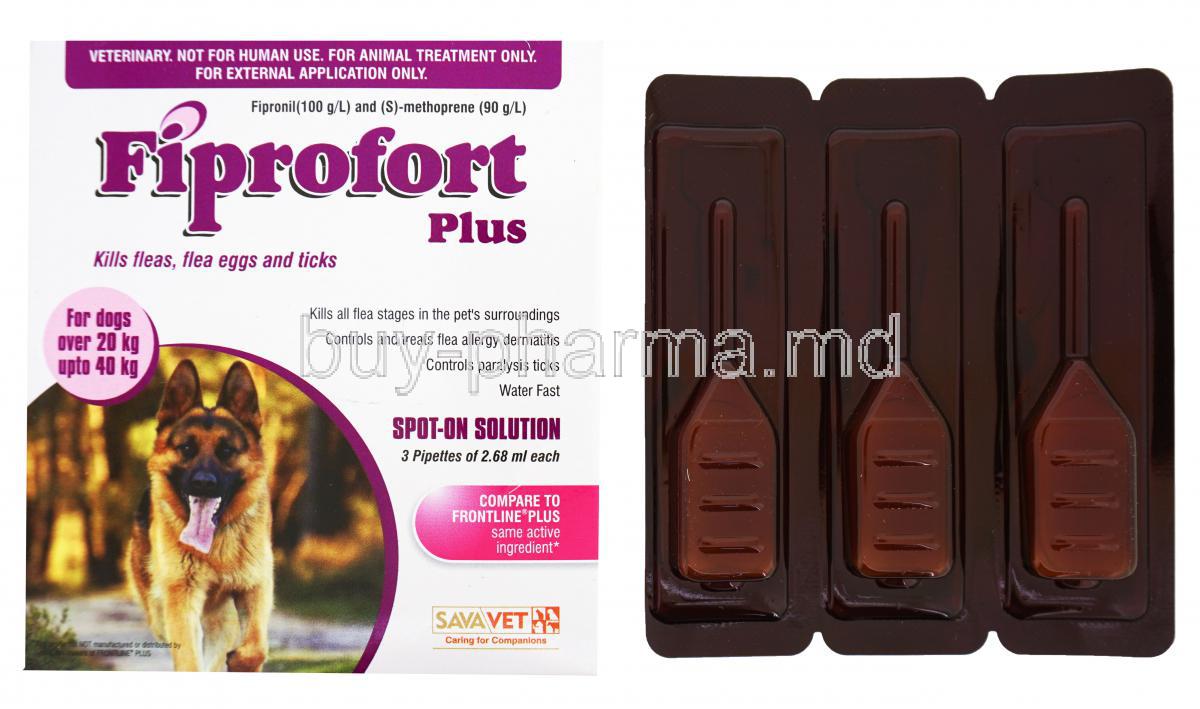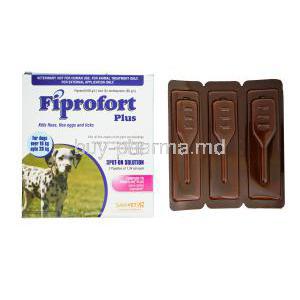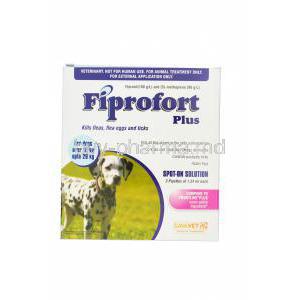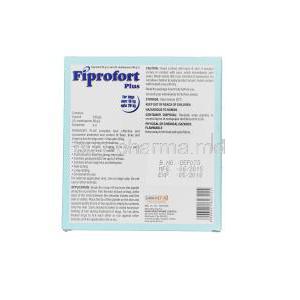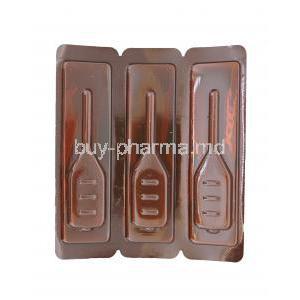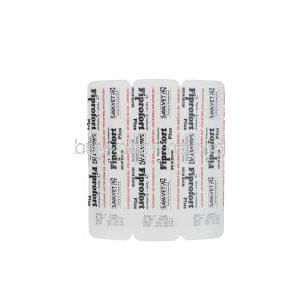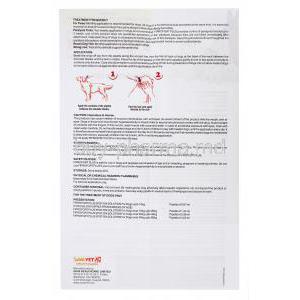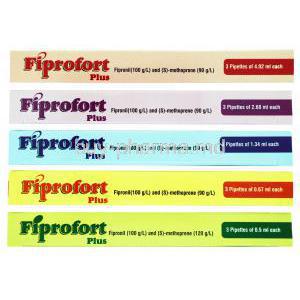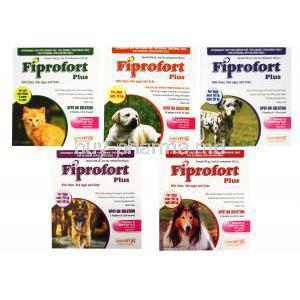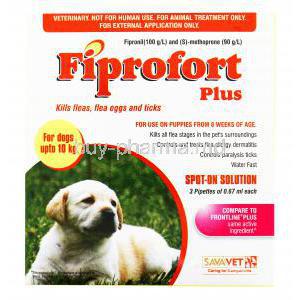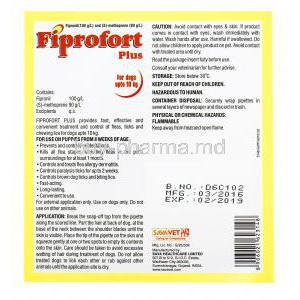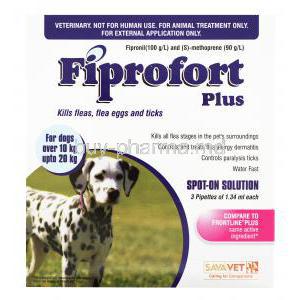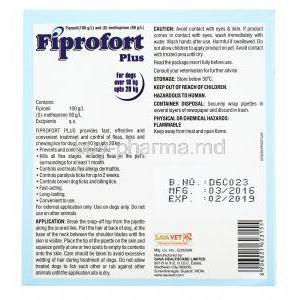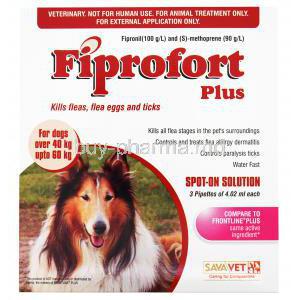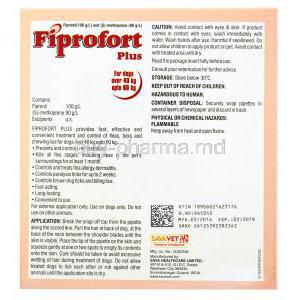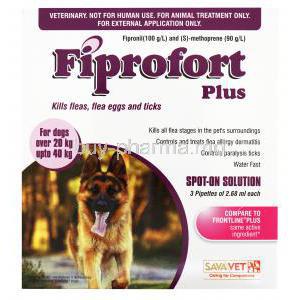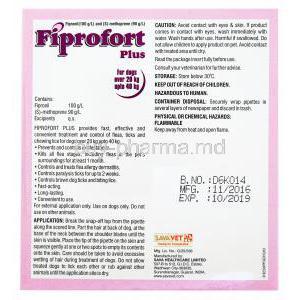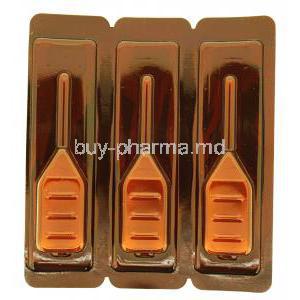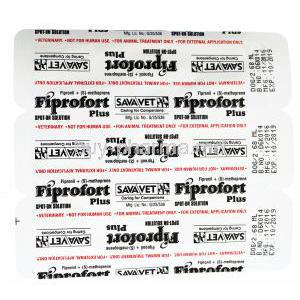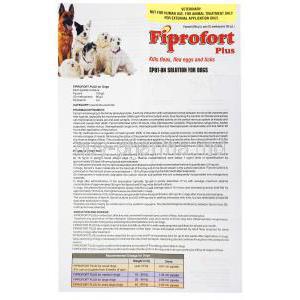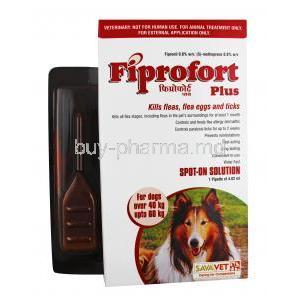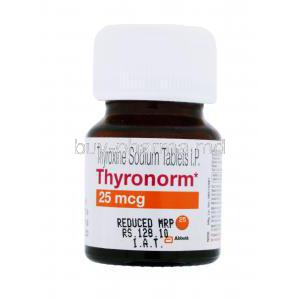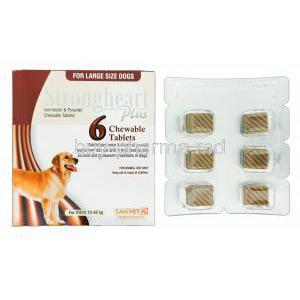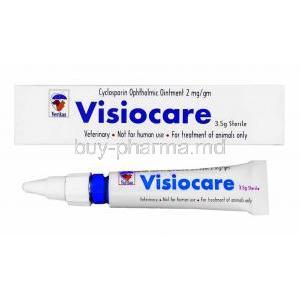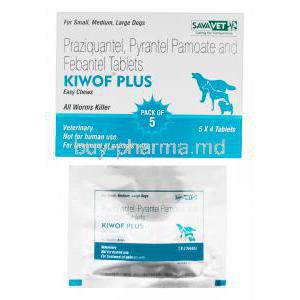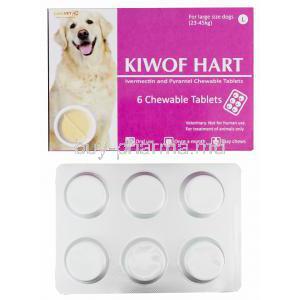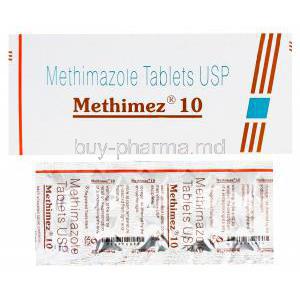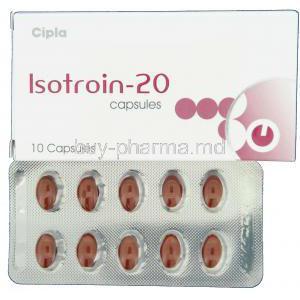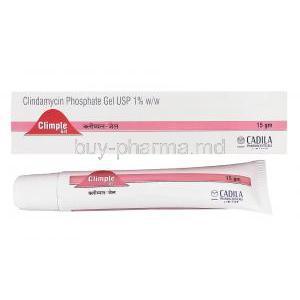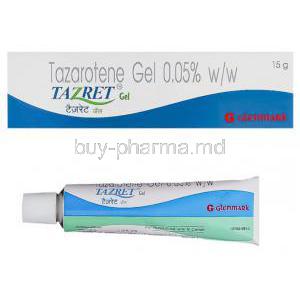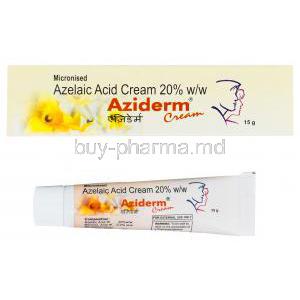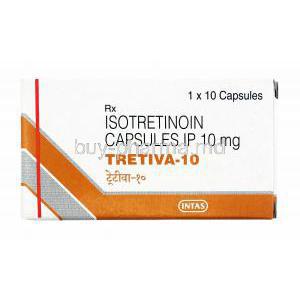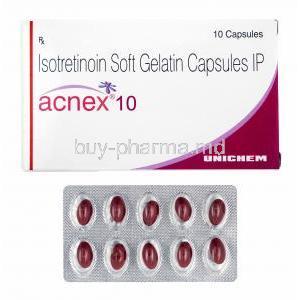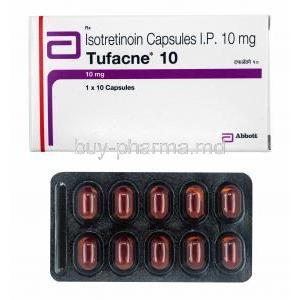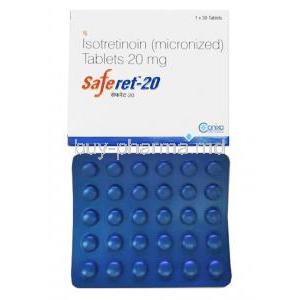Introduction to Fiprofort Plus Spot On Solution for Dogs
Overview of Fiprofort Plus as a Topical Ectoparasiticide
Fiprofort Plus Spot On is a potent topical antiparasitic solution formulated specifically for dogs. It provides reliable protection against external parasites such as fleas, ticks, and lice by eliminating both adult and developmental stages.
Veterinary Use Classification and Regulatory Status
Fiprofort Plus is classified as a veterinary medicinal product approved for over-the-counter use in many countries. Its regulatory status ensures it meets safety and efficacy standards for companion animal healthcare.
Benefits of Using Spot-On Solutions Over Oral or Injectable Formulations
- Simple and non-invasive administration - Reduced gastrointestinal side effects - Localized action with systemic impact - Long-lasting protection with a single monthly application
Composition and Active Ingredients
Detailed List of Active Ingredients (Fipronil and (S)-Methoprene)
Each pipette contains: - Fipronil: 9.8% w/v – an insecticide and acaricide - (S)-Methoprene: 8.8% w/v – an insect growth regulator (IGR)
Mechanism of Synergy Between Fipronil and (S)-Methoprene
Fipronil targets adult parasites by disrupting GABA-gated chloride channels, leading to paralysis and death. (S)-Methoprene complements this by mimicking juvenile hormones, halting the development of eggs and larvae, thereby preventing re-infestation.
Inert Ingredients and Their Role in Dermal Absorption
Inert carriers and solvents aid in even dispersion across the skin and facilitate transdermal absorption. These ingredients ensure active compounds remain effective throughout the intended duration.
Fipronil vs bifenthrin
Fipronil is often favored for targeted treatments against termites, ants, and fleas, while bifenthrin is a more broad-spectrum insecticide effective against a wider range of pests, including agricultural and household insects.
Indoxacarb vs fipronil
Indoxacarb and fipronil are both insecticides used to control pests, but they have different mechanisms of action and target different pests. Indoxacarb works by blocking sodium channels in the insect's nervous system, while fipronil blocks GABA-gated chloride channels. Indoxacarb is known for its delayed-action effect, allowing pests to spread the insecticide before dying, while fipronil is known for its faster-acting, knockdown effect.
Imidacloprid vs fipronil
Imidacloprid is a systemic insecticide, meaning it's absorbed by plants and provides long-term protection, while fipronil is a non-systemic insecticide that works primarily through contact and ingestion. Fipronil tends to have a faster speed of kill compared to imidacloprid.
How Fiprofort Plus Spot On Works in Canines
Mode of Action: Neurotoxicity to Adult Parasites via Chloride Channel Disruption
Fipronil interferes with the central nervous system of ectoparasites by blocking GABA-regulated chloride channels, causing hyperexcitation and subsequent death.
Inhibition of Flea Lifecycle Through Insect Growth Regulator (IGR) Action
(S)-Methoprene interrupts the flea reproductive cycle by preventing larvae from maturing into adults, effectively breaking the lifecycle and ensuring comprehensive protection.
Timeline of Action: Onset and Duration of Efficacy
- Begins acting within 24–48 hours after application - Continues to provide protection for up to 30 days - Reapplication recommended monthly for continuous defense
Parasites Targeted: Fleas, Ticks, Lice, Mites
Fiprofort Plus is effective against: - Fleas: Ctenocephalides felis and C. canis - Ticks: Rhipicephalus, Ixodes, and Dermacentor species - Lice: Trichodectes canis - Off-label effectiveness against mites such as Sarcoptes
Fiprofort Plus for Dogs Uses
Prevention and Treatment of Flea Infestations
Kills adult fleas and prevents flea eggs from hatching, thereby reducing the burden of infestation and preventing recurrence.
Control of Tick Infestations
Eliminates various tick species known to transmit diseases such as Lyme disease and ehrlichiosis.
Prevention of Flea Allergy Dermatitis (FAD)
Interrupts flea bites, thus minimizing the risk of hypersensitivity reactions in allergic dogs.
Control of Biting Lice
Effectively treats infestations caused by biting lice, offering rapid relief from associated discomfort and skin damage.
Off-Label and Investigational Uses in Dogs
Use in Managing Sarcoptic Mange (Sarcoptes scabiei)
Veterinarians may employ Fiprofort Plus as part of combination therapy for treating sarcoptic mange due to its efficacy in reducing mite populations.
Adjunctive Use in Demodicosis (Demodex canis) Treatment Plans
Though not officially indicated, Fiprofort Plus is occasionally used with other acaricidal treatments to support demodex control.
Field Reports on Use for Fly Strike Prevention or Repellent Effects
Some anecdotal evidence suggests reduced incidence of fly strike in treated dogs, likely due to the residual insecticidal activity.
Fipronil Termite
Ideal for use in households with multiple pets, where coordinated parasite control programs are implemented.
Dosage Guidelines and Administration Instructions
Weight-Based Dosing for Small, Medium, Large, and Extra-Large Dogs
- Small dogs (up to 10 kg): 0.67 mL - Medium dogs (10–20 kg): 1.34 mL - Large dogs (20–40 kg): 2.68 mL - Extra-large dogs (40–60 kg): 4.02 mL
How to apply Fiprofort on dogs
- Part the fur between the shoulder blades - Apply entire contents directly to skin - Avoid massaging or spreading with hands - Do not bathe dog for 48 hours post-application
Frequency of Administration: Monthly Use Recommendation
Apply once every 30 days for continuous protection throughout the year.
What to Do in Case of Missed or Delayed Dose
Administer as soon as remembered. Do not double dose; resume regular monthly schedule thereafter.
Storage and Shelf Life Considerations
Ideal Storage Temperature Range and Humidity Precautions
Store at 25°C (77°F), with excursions permitted between 15–30°C. Avoid exposure to moisture and direct sunlight.
Container Safety: Light-Resistant and Childproof Packaging
Each pipette is sealed in individual foil blisters to maintain stability and prevent accidental access by children or pets.
Shelf Life After Opening and Expiration Considerations
Use immediately upon opening. Do not store partially used pipettes. Discard any unused product after expiration date.
Possible Drug Interactions and Veterinary Cautions
Known Interactions with Other Topical or Oral Antiparasitics
Avoid concurrent use with other ectoparasiticides unless under veterinary supervision due to potential additive toxicity.
Precautions When Used Alongside Corticosteroids or Immunosuppressants
Monitor immune-compromised dogs closely, as systemic absorption may be higher and adverse effects more pronounced.
Risk of Cumulative Neurotoxicity with Frequent Use of Other Ectoparasiticides
Limit use to once per month. Overuse or combination with similar agents may increase neurotoxicity risk.
Warnings and Contraindications
Not for Use in Sick or Debilitated Animals
Avoid in dogs exhibiting systemic illness or immune suppression without veterinary evaluation.
Contraindicated in Dogs with Known Hypersensitivity to Fipronil or Methoprene
Discontinue use immediately if allergic reaction occurs; seek veterinary attention for severe symptoms.
Not Recommended for Use in Puppies Below 8 Weeks or Under 2 kg
Safety and efficacy have not been established in neonatal or undersized puppies.
Veterinary Discretion Advised in Dogs with Epilepsy or Neurological Disorders
Due to the potential for neurotoxic effects, use only with extreme caution in predisposed breeds or individuals.
Fiprofort Plus Side Effects
Localized Skin Irritation at the Application Site
Mild redness, itching, or inflammation at the site of application is the most commonly observed reaction. These symptoms are typically transient and resolve without intervention. In some cases, a visible reaction may persist for a few days post-application.
Temporary Hair Loss or Greasiness at the Treated Area
Some dogs may experience localized alopecia or a greasy texture in the area where the solution was applied. These cosmetic effects are generally non-threatening and do not require cessation of treatment unless accompanied by secondary infection.
Increased Scratching or Restlessness Post-Application
Treated dogs may exhibit momentary agitation or restlessness, including excessive scratching or rubbing against surfaces. This behavior usually subsides within a short timeframe and is not indicative of serious adverse effects.
Less Common or Serious Adverse Reactions
Signs of Systemic Toxicity: Tremors, Lethargy, Vomiting
Though rare, systemic absorption can occur and may lead to signs of neurotoxicity. These include: - Muscle tremors or twitching - Profound lethargy - Episodes of vomiting Such symptoms necessitate prompt veterinary evaluation.
Rare Anaphylactic or Allergic Reactions
In exceptional cases, dogs may exhibit hypersensitivity reactions such as facial swelling, hives, difficulty breathing, or collapse. These symptoms may signal anaphylaxis and require emergency care.
Long-Term Dermal Hypersensitivity With Chronic Use
Repeated exposure over extended periods may sensitize the skin, leading to chronic dermatitis or persistent inflammatory responses. Veterinary consultation is advised if dermal symptoms worsen with each successive application.
Special Precautions and Handling Measures
Avoid Contact With Dog’s Eyes, Mouth, and Mucous Membranes
Fiprofort Plus is intended for external dermal use only. Contact with mucosal surfaces may cause irritation or chemical burns and should be avoided.
Prevent Licking of the Application Site by Treated or Other Dogs
Dogs should be kept separated after treatment until the solution has dried completely. Ingesting the product can lead to gastrointestinal upset or systemic toxicity.
Fipronil toxicity dogs
Fipronil, commonly found in flea and tick treatments for dogs, can be toxic, especially if ingested or if used on certain sensitive animals. Overexposure can lead to neurotoxicity, causing symptoms like tremors, seizures, and potentially death
Recommendations for Use of Gloves and Handwashing After Application
Handlers are advised to wear disposable gloves during application and wash hands thoroughly afterward. Avoid smoking, eating, or drinking during the process to reduce accidental exposure.
Safe Disposal of Applicator and Unused Product
Used pipettes and any remaining solution should be discarded in accordance with local environmental and veterinary regulations. Do not dispose into household waste or drains.
Use in Specific Canine Populations
13.1 Administration in Puppies and Juvenile Dogs
Fiprofort Plus is not recommended for use in puppies under 8 weeks of age or weighing less than 2 kg. Their developing organs and immune systems may respond unpredictably to the active compounds.
Caution in Immature Immune Systems
Puppies have underdeveloped detoxification pathways. Even mild systemic exposure could potentially result in heightened sensitivity or adverse effects, requiring cautious veterinary oversight.
13.2 Use in Elderly Dogs
Increased Absorption Risk Due to Skin Thinning
Aging dogs often exhibit thinner dermal layers, potentially leading to increased percutaneous absorption and elevated risk of systemic side effects.
Evaluation of Comorbidities Prior to Use
Before initiating treatment in geriatric dogs, pre-existing health conditions such as liver or kidney disease should be assessed to ensure metabolic clearance of active ingredients.
13.3 Administration in Pregnant and Lactating Dogs
Available Safety Data and Teratogenicity Risk
Limited clinical data exists on the use of fipronil and (S)-methoprene in pregnant or nursing dogs. While teratogenic effects have not been conclusively observed, cautious use is advised.
Veterinary Monitoring During Pregnancy and Lactation
Application should only proceed under veterinary supervision, with monitoring for unusual behavioral or physiological changes in the dam or offspring.
Precautionary Recommendations During Peripartum Period
Avoid application during late gestation or early postpartum periods unless strictly necessary, due to heightened metabolic demands and hormonal fluctuations.
Guidelines for Overdose and Toxic Exposure
Clinical Signs of Overdose: Hypersalivation, Ataxia, Tremors
Toxicity may result from improper dosing, ingestion, or repeated application. Observable symptoms include: - Excessive drooling - Loss of coordination or stumbling - Muscular tremors
Emergency Management and Detoxification Protocols
Veterinary care may include: - Activated charcoal for oral ingestion - IV fluid therapy - Anti-convulsants for neurological symptoms - Supportive care until toxin clearance
When to Seek Immediate Veterinary Intervention
Immediate action is required if a dog exhibits any signs of neurological compromise, collapse, vomiting, or persistent distress following exposure. Timely intervention improves prognosis significantly.
Careful Administration and Veterinary Monitoring
Dogs With Pre-existing Dermatologic Conditions
In dogs with existing skin conditions (e.g., dermatitis, eczema), application may exacerbate lesions or cause unpredictable reactions. Patch testing may be warranted prior to full application.
Use Alongside Other Topical Medications
Concurrent use with shampoos, sprays, or other spot-on formulations may potentiate adverse effects or reduce efficacy. Veterinary discretion is essential when layering treatments.
Adverse Reaction Reporting and Documentation
All adverse events, regardless of severity, should be recorded and reported to the attending veterinarian and relevant pharmacovigilance authorities. Consistent documentation helps ensure product safety and future improvements.
Fiprofort Plus Spot On Solution for Dogs FAQ
- What is the use of Fiprofort spot on?
- What is Fipronil S methoprene spot on solution used for?
- What is the use of Fipronil spot on?
- Is Fiprofort Plus safe for cats?
- Is fipronil a good flea killer?
- How long is fipronil effective?
- What is the benefit of Fiprofort plus?
- Is fipronil poisonous to cats?
- Is fipronil and s-methoprene safe for dogs?
- What if my dog licks fipronil?
- How often can I apply fipronil?
- How do you use fipronil s-methoprene?
- How long does methoprene work?
- Is fipronil safe for dogs to lick?
What is the use of Fiprofort spot on?
Fiprofort Plus Spot On Solution eliminates fleas and ticks along with their eggs.
What is Fipronil S methoprene spot on solution used for?
It is employed for managing and preventing fleas and ticks in dogs and young puppies that are at least 8 weeks old.
What is the use of Fipronil spot on?
It is used to control fleas and ticks.
Is Fiprofort Plus safe for cats?
Yes
Is fipronil a good flea killer?
Yes
How long is fipronil effective?
Up to 90 days
What is the benefit of Fiprofort plus?
Fiprofort Plus Spot On Solution effectively eliminates fleas and ticks, along with their eggs. It also offers relief from flea allergy dermatitis and protects against paralysis ticks for a duration of up to two weeks.
Is fipronil poisonous to cats?
No
Is fipronil and s-methoprene safe for dogs?
Yes
What if my dog licks fipronil?
Fipronil can impact the gastrointestinal system and the nervous system. It may cause skin irritation as well. Signs of distress that are frequently observed when fipronil is ingested include salivation, along with the urge to gag and vomiting episodes.
How often can I apply fipronil?
Every 4 weeks
How do you use fipronil s-methoprene?
Apply the solution directly onto the pet's skin by spreading it between the shoulder blades after separating the fur strands.
How long does methoprene work?
30 days
Is fipronil safe for dogs to lick?
No

